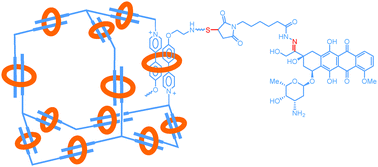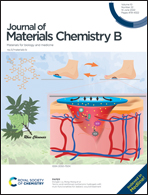Conjugating aldoxorubicin to supramolecular organic frameworks: polymeric prodrugs with enhanced therapeutic efficacy and safety†
Abstract
Phase I–III clinical studies show that aldoxorubicin (AlDox), a prodrug of doxorubicin (Dox), displays reduced cardiotoxicity compared to Dox, but does not demonstrate an overall survival benefit in patients. Here we report that three-dimensional supramolecular organic frameworks (SOFs) can conjugate AlDox through quantitative thiol–maleimide addition to afford two polymeric prodrugs of Dox. The previously established ability of SOFs in overcoming the multidrug resistance of tumor cells is utilized to achieve efficient intracellular delivery of the conjugated AlDox, which releases Dox as an active agent through acid-responsive hydrolysis of the hydrazone bond of AlDox within tumor cells. In vitro and in vivo experiments show that conjugation to SOF significantly improves the antitumor efficacy of AlDox as compared with free AlDox of the identical dose. Moreover, the SOF prodrugs do not show cardiotoxicity, the major superiority of AlDox over Dox. Since free AlDox is conjugated to endogenous albumin in the blood through thiol–maleimide addition to achieve enhanced intracellular delivery and Dox release through acid-responsive hydrazone hydrolysis, SOF conjugation provides a surrogate strategy for prodrug design to gain improved efficacy.



 Please wait while we load your content...
Please wait while we load your content...